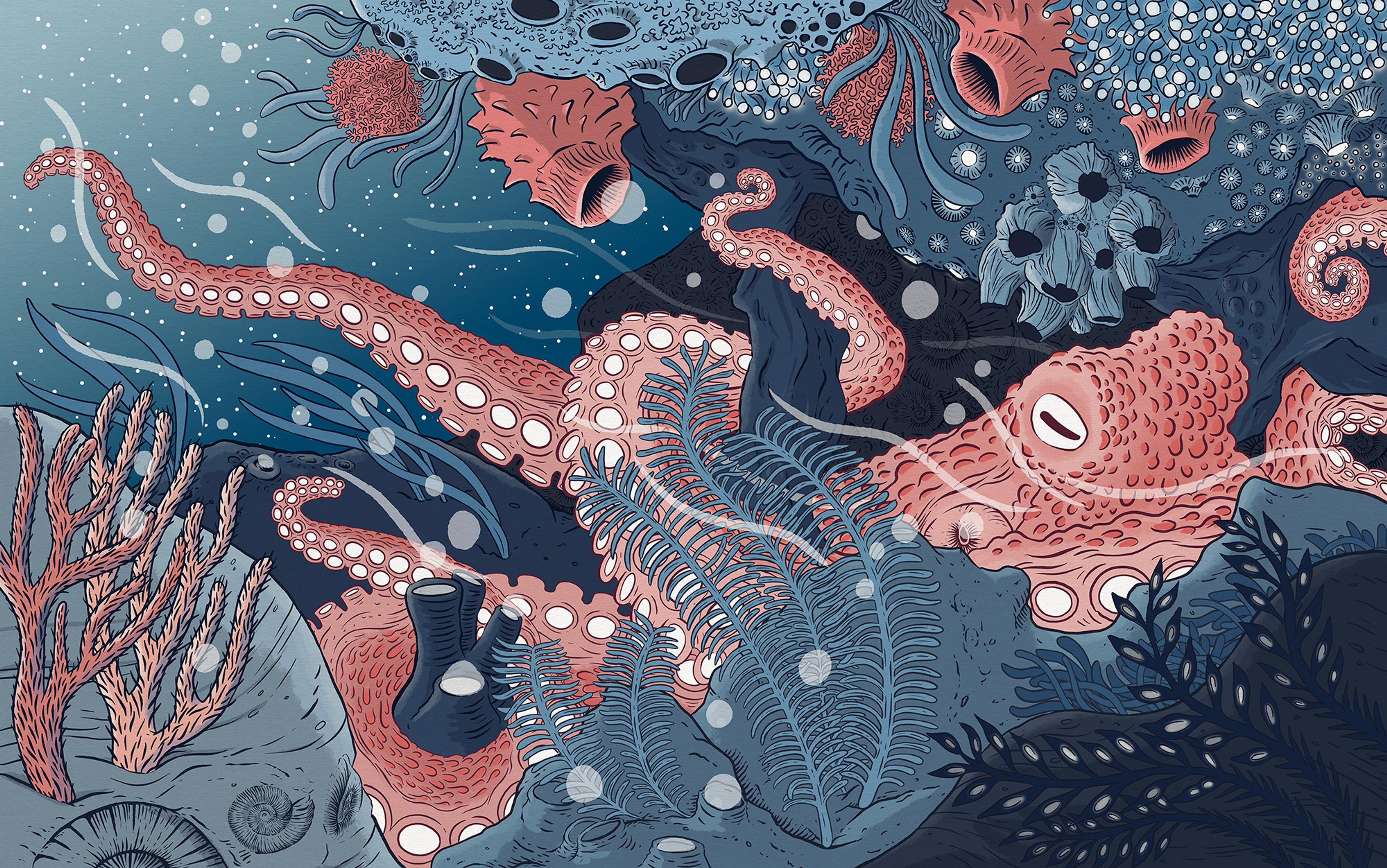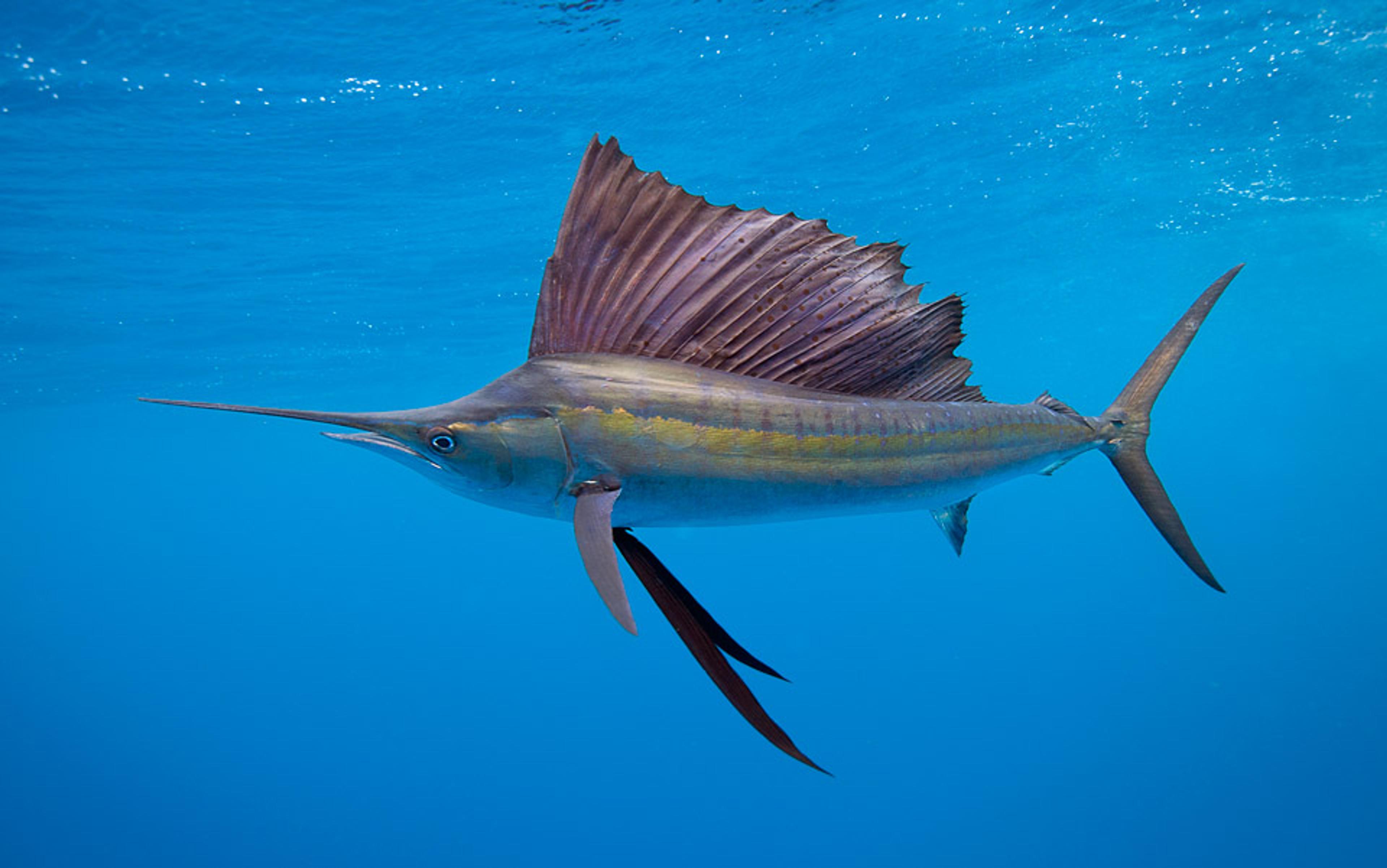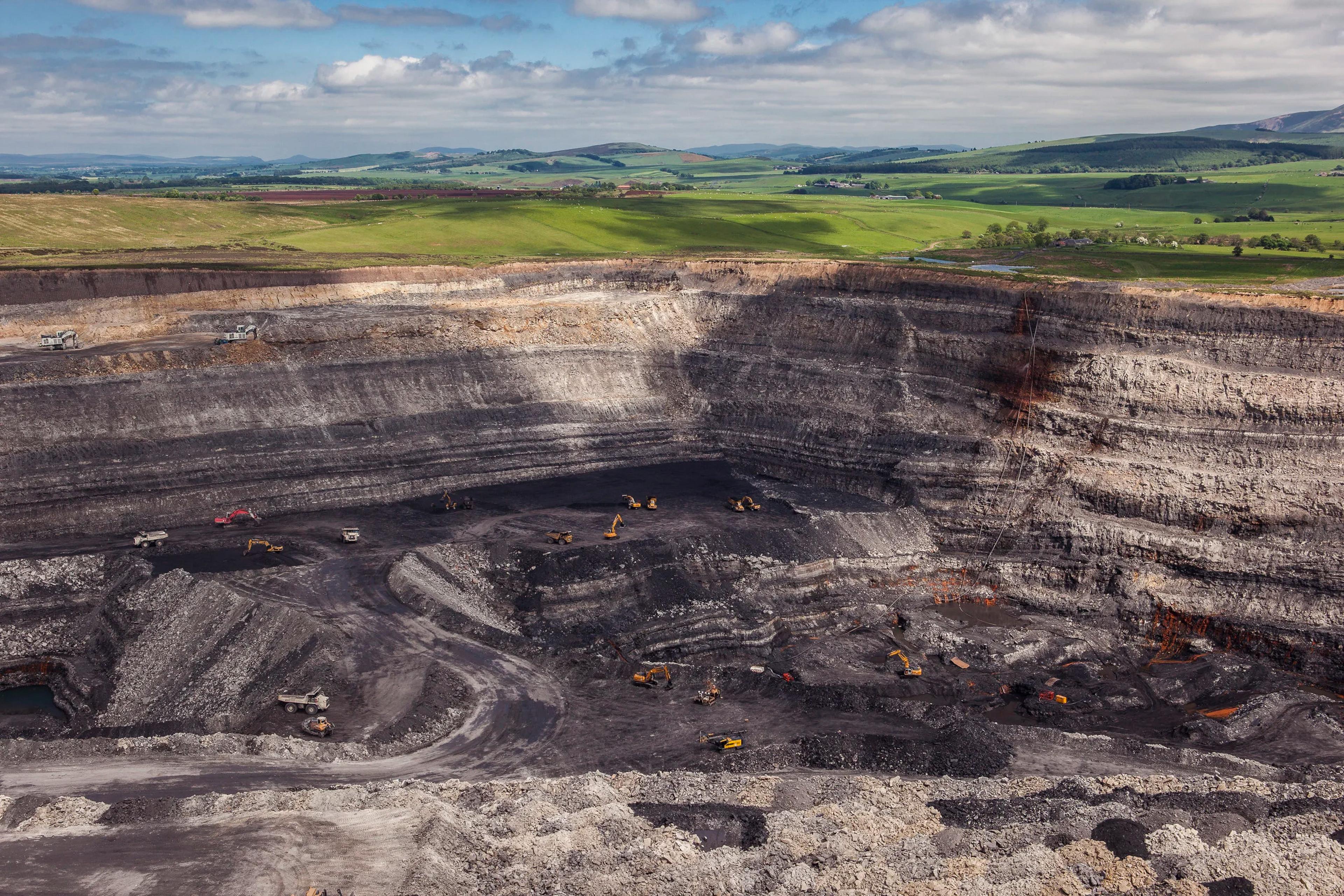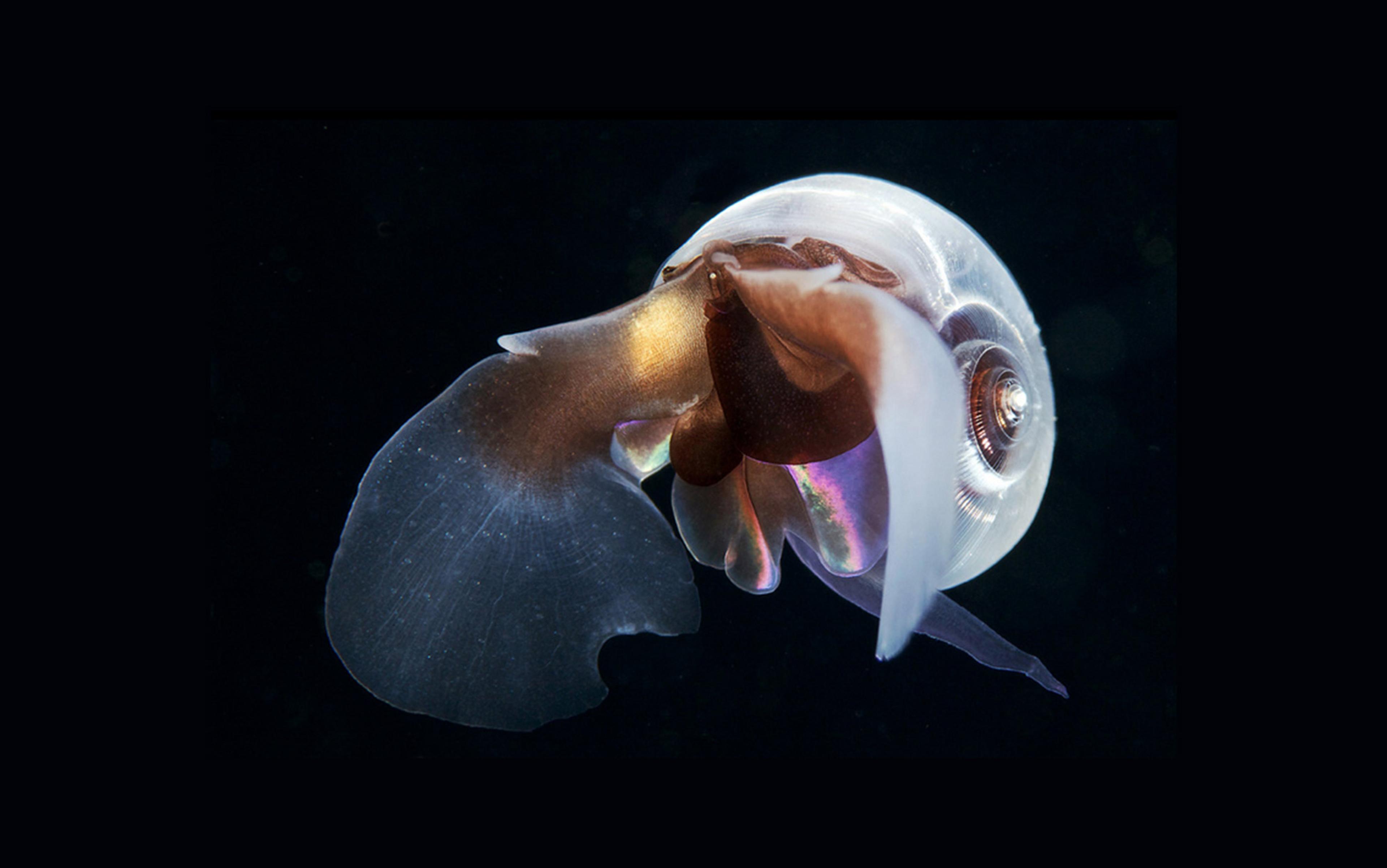As often as I can, I make my way to the beach. Usually, I am there to swim, sometimes just to walk along the cliffs. Either way, I go because the ocean reveals a different way of being, one where time is not measured with a clock, but instead can be found in the movement of the clouds overhead, the ebb and flow of the tide, the steady pulse of the surf.
The notion that the ocean’s immensity contains other kinds of scale and temporality has a long history. The writer Romain Rolland, a friend of Sigmund Freud, coined the term ‘oceanic feeling’ to describe the sensation of boundlessness and unity he believed was the source of religious awe. It does not seem a coincidence that, when the science writer John McPhee sought a term to evoke the almost unthinkable span of geological eras, he chose the marine metaphor of ‘deep’ time. The English words ‘time’ and ‘tide’ even share a common root.
But the ocean’s rhythms offer more than a glimpse of the infinite. Thinking about – or with – the ocean can help connect us to the great cycles that sustain life on Earth and the pulse of living being and presence that surrounds us. More importantly, the conceptions of time and temporality contained in the ocean provide powerful new ways of approaching the interconnected social and environmental crises that are overtaking our planet.
As the movement of the tides and the surf makes clear, time inheres in the ocean’s cycles. Like the tides, some of these rhythms are driven by Earth’s movement: every night, as darkness falls across the oceans, a great wave of life ascends from the mesopelagic to feed and hunt in surface waters, only to descend once more at dawn. Known as the diel migration, and comprising an astonishing diversity of species ranging from zooplankton to deadly Humboldt squid and strange creatures such as billowing larvaceans, this daily dance is the single largest movement of life on the planet, and plays a vital role not just in the carbon cycle but also in ocean mixing.
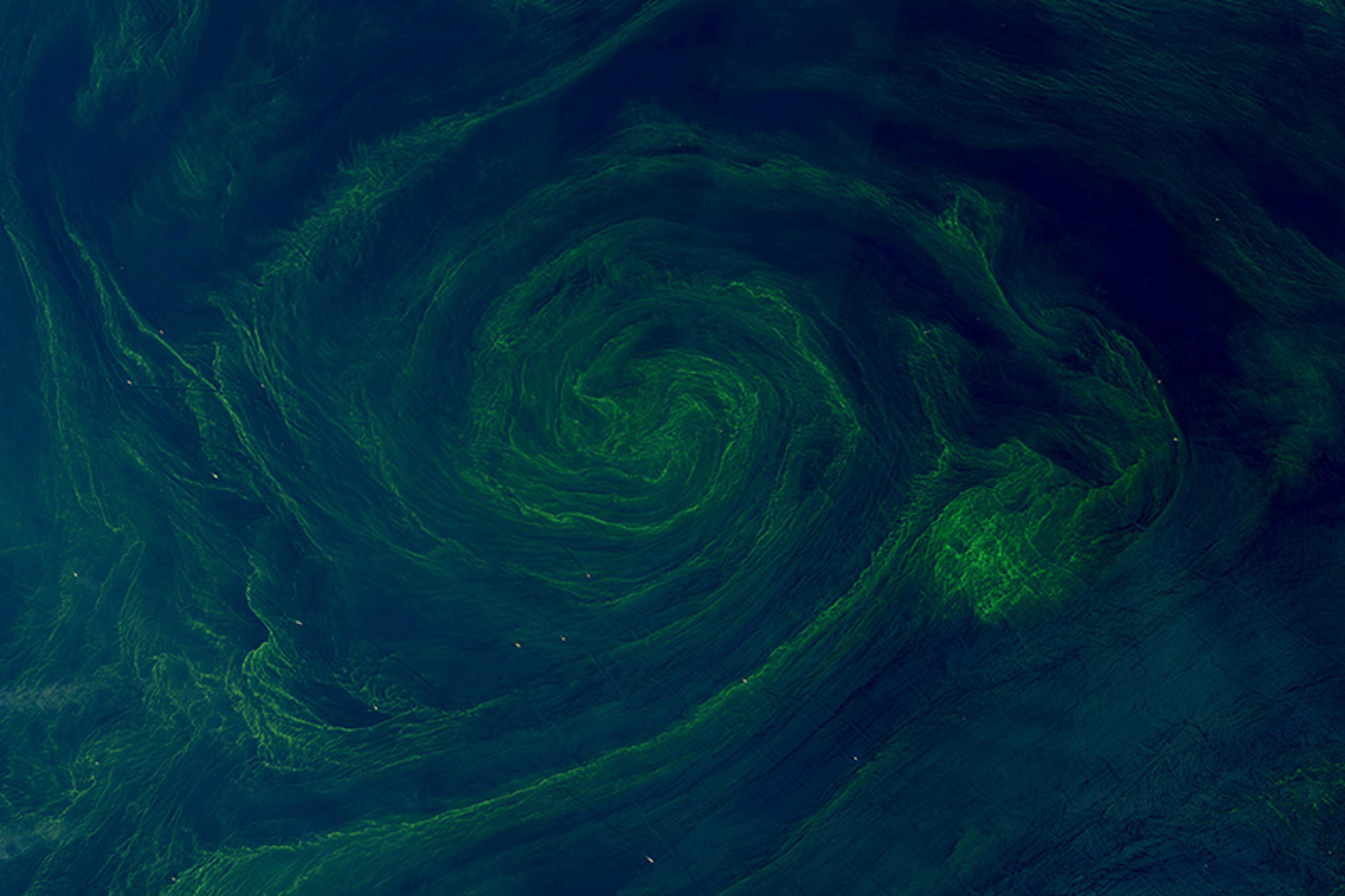
Phytoplankton blooming in the Gulf of Oman, seen from NASA’s Earth Observatory satellite. Courtesy NASA
While its metronome is slower, the movement of Earth around the Sun also regulates the timing of the great blooms of phytoplankton that spread through southern and northern waters each spring. These explosions of diatoms provide food for an impossible profusion of zooplankton that ranges from tiny copepods to larval fish and crustaceans, underpinning the ocean foodweb and the lifecycles of many species. In the frigid waters of the Southern Ocean, the lifecycle of the Antarctic krill also depends upon this annual blossoming of life. As the sea ice retreats in the spring, the krill emerge from their winter refuges to feed and form agglomerations so huge they can be seen from space. Meanwhile, on the Great Barrier Reef, billions of corals spawn over a night or two at Full Moon in late spring and early summer, expelling clouds of milky eggs and sperm that spread outwards on the currents to colonise new locations.
Most of these internal chronometers are attuned to the same cycle of light and dark that governs human biology
Woven through these great cycles are other, more intimate rhythms. On reefs and elsewhere that animals gather, fish and other species greet the rising of the Sun with a dawn chorus much like the one that takes place on land. In Aotearoa/New Zealand, one of the dominant sounds is sea urchins, or kina, grazing on the algae growing on the rocks – a sound like crackling flames.
Whales, fish, birds and other animals move with the seasons too. Some of these, like the humpbacks that pass Sydney every year on their journey from the Antarctic to tropical waters and back, or the long, wandering paths of turtles and great white sharks, cover many thousands of kilometres. Others, such as the hemisphere-spanning flights of shearwaters and Arctic terns, are even longer.
Other animals are more local: every January, sea mullet leave Botany Bay/Gamay, and head up the Cooks River near my home to spawn. On days when the tide is especially low, they appear as a long line, one or two fish wide, that extends like a dark seam as far as the eye can see. And every November, the eels in the creeks and ponds upstream swim the other way, en route to the Coral Sea, where they gather to spawn and die.
As with terrestrial animals, these rhythms are governed by environmental factors. But they are also regulated by biological clocks built into the animals themselves. Most of these internal chronometers are attuned to the same cycle of light and dark that governs human biology – the word ‘circadian’ is from the Latin circa (around) and dies (day) – or the phases of the Moon, but in the ocean some coastal animals run on a cycle that follows the 12.4-hour pulse of the tides.
While we tend to imagine time as something external – a phenomenon to be tracked with technologies such as watches and chronometers – the interplay between life’s internal clocks and the interlocking patterns of flux and change of the seasons, the tides, and night and day, reminds us that time doesn’t exist outside the world. Instead, it inheres within it, and within us. We carry time in our bodies, written into our cells, the very fabric of our being.
Indeed, the notion of time as something separate is a recent invention, and not present in Indigenous or traditional cultures. In a discussion of the idea of time in the culture of the Yawuru People, whose Country lies on the coast of northwestern Australia, the anthropologist Sarah Yu observes that Yawuru has no word for ‘time’ as an abstract idea. Instead, time is understood through the seasons, a constant cycle that connects the Yawuru to Bugarrigarra (Creation time). As Yu writes, Yawuru life is governed by the patterns of ceremony and obligation embedded within this cycle:
‘Walgawalga time’ is salmon time … ‘Hot time’ (Laja) is the time for getting shellfish. In the words of Yawuru Elder Dianne Appleby: ‘We follow the seasons; that is how we survived. For us time is cyclical, not linear.’
Similarly, Bugarrigarra should not be understood as long ago in any simple sense; instead, it merges past, present and future within ‘a spiritual, physical and metaphysical land- and seascape’. Or in the words of Yawuru chairperson Thomas Edgar Undabudi: ‘There is no time; it’s a living thing … It is ongoing and never stops.’
These older ways of inhabiting the world began to disappear only with the arrival of mechanical clocks. As these devices spread through northern Europe in the first half of the previous millennium, a process began that would transform the human conception of time, altering it from something that inheres in the world into something external, a commodity that can be bought and sold, or what the historian Moishe Postone refers to as ‘abstract’ time.
Fertilisers and farm machinery ruptured the ancient links between the land and the seasons
The acceleration towards our modern conception of time is usually dated to the Industrial Revolution, and the need to coordinate workers to the demands of machines. But an oceanic perspective suggests it began at least two centuries earlier, with the abduction of millions of Africans from their homes and their transportation across the Atlantic to the Americas. For it was on the sugar plantations of the New World, in what the historian Sidney Mintz described in Sweetness and Power (1985) as their ‘synthesis of field and factory’, that we see the rise of a mode of production built around regimentation and efficiency, one in which human bodies occupied the roles that would later be filled by machines.
In their History of the World in Seven Cheap Things (2018), Raj Patel and Jason W Moore similarly argue that sugar plantations were highly mechanical operations, depending upon boilers and rolling mills, as well as a ruthless simplification of work that turned people into machines and transformed the land into a sugarcane monoculture. In other words, they write, ‘the sugar plantation was a forerunner not only of today’s industrial agriculture but of today’s modern factory.’ And as the literary scholar Sophie Gee makes clear in her forthcoming book The Barbarous Feast (2026), the use of curfews and movement restrictions on the Sabbath and religious holidays – both of which involved the imposition of European and colonial conceptions of clock time and the liturgical calendar – were integral parts in the systems of control imposed upon Indigenous people and enslaved Africans in the West Indies.
This transformation sped up further with 18th-century industrialisation. This was most pronounced on land, where new technologies decoupled human life from natural rhythms. In cities, where the rhythms of living and working were increasingly shaped by the demands of machines and factories, fossil fuels banished darkness, while in rural areas fertilisers and farm machinery intensified agricultural production, rupturing the ancient links between the land and the seasons. Meanwhile, systems of accounting arose that discount the future, allowing corporations to amortise the ecological cost of destructive practices and rendering the long-term cost of these processes invisible. As the historian Barbara Adam observes in Timescapes of Modernity (1998), abstract time is a ‘central part of the deep structure of environmental damage wrought by the industrial way of life.’
The ocean was not immune to this step-change in our relationship with the natural world. The 19th-century advent of railways capable of swiftly delivering fish to inland population centres drove a massive expansion of fishing and trawling, and the 20th-century steamships led to the wholesale slaughter of whales. This process of industrialisation continues with the expansion of oil and gas extraction and their transfer of the energy of the deep past into the present.
But the ocean was central to this transformation of temporality in deeper ways. Not only were European colonialism and the transatlantic slave trade largely shipborne phenomena, the notions of progress, modernity and profit that provided their ideological justification are all rooted in linear notions of time. The improvements in navigation and cartography that enabled the spread of European colonialism depended upon the accurate measurement of longitude of John Harrison’s marine chronometer. The adoption of standardised time around the world was largely driven by the challenges of coordinating empires across multiple continents, and enabled by submarine telegraph cables.
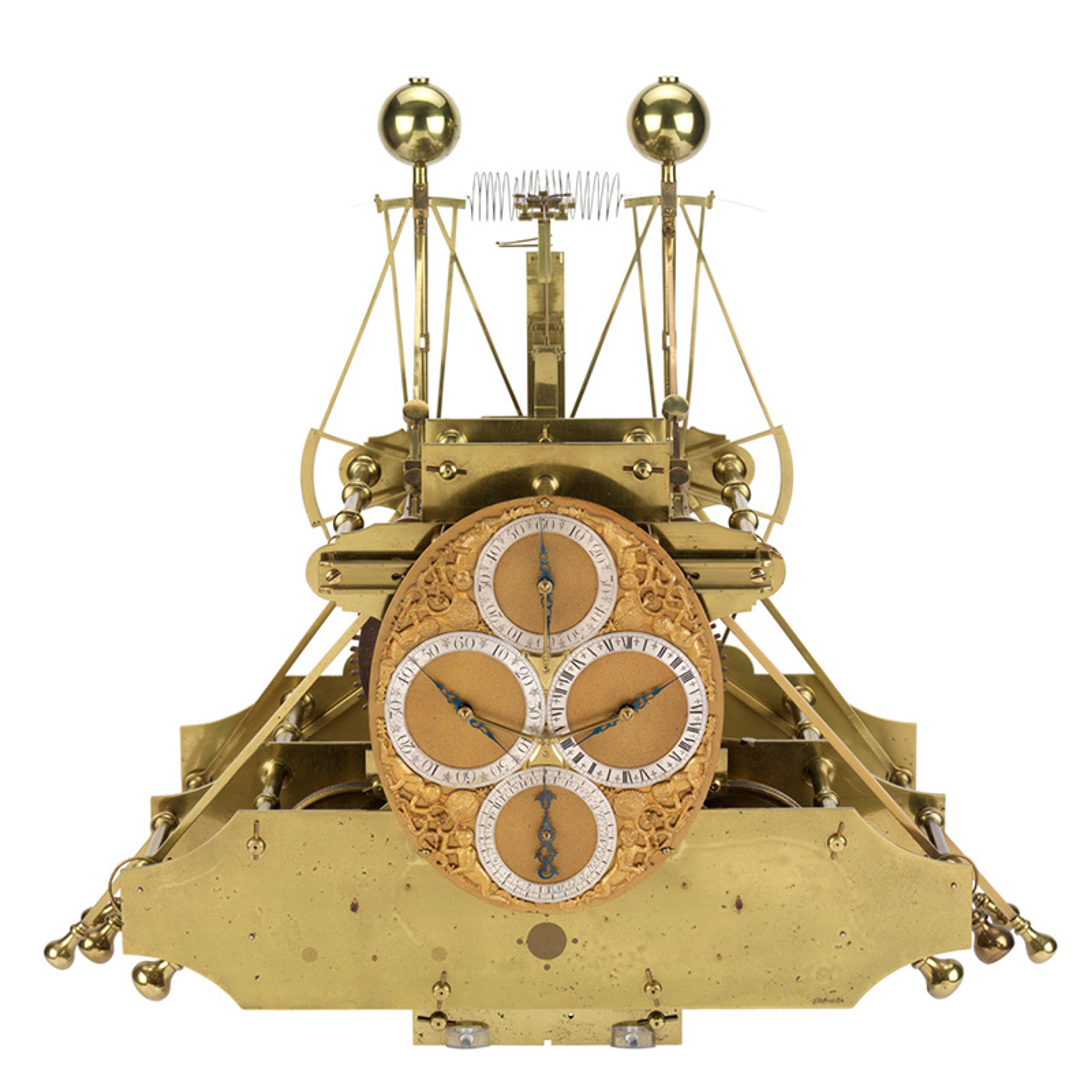
John Harrison’s experimental H1 marine timekeeper. Its two interconnected swinging balances mean that the timekeeper is unaffected by the ship’s motion. Both images © National Maritime Museum, Greenwich, London, Ministry of Defence art collection

Harrison’s longitude watch, the H4 marine timekeeper, completed in 1759
This process continues today. The world economy is underpinned by shipping, an industry that relies upon sophisticated logistics to transport goods quickly and cheaply, effectively eliminating time and space, but fuelling unsustainable consumption and ecological destruction. The internet’s simultaneity relies upon fibreoptic cables that snake across the seafloor, moving data instantaneously across the planet. Even the climate crisis has been driven by the transport of billions of tonnes of oil, gas and coal across the ocean’s surface.
There is nothing novel about the idea of environmental breakdown as a crisis of temporality. As human impacts on the planet intensify, human time and geological time are collapsing into each other, with catastrophic results. In Antarctica, glaciers are flowing faster, and ice sheets are melting. In the Arctic, the frozen bodies of mammoths and cave lions are emerging as the permafrost melts and methane belches forth. On land and in the ocean, extinction rates are soaring.
This process of collapsing temporalities is starkly apparent in the ocean. Corals, kelp forests and mangroves are dying, as temperature rises outpace their ability to adapt. In the Pacific, the Arctic and elsewhere, communities are grappling with the impact of rising sea levels. And, everywhere, animal populations are on the move, shifting polewards in an attempt to escape the hastening effects of ocean heating.
As an oil spill or bleached coral reef show, industrialisation’s impact on the oceans can happen at shocking speed. However, it can happen more ‘gradually and out of sight’ too – a process eloquently captured in the notion of ‘slow violence’. The environmental scholar Rob Nixon describes this as a process of ‘delayed destruction that is dispersed across time and space, an attritional violence that is typically not viewed as violence at all.’ Examples include the ruination of ecosystems by extractive industry and climate change, and the destruction of Indigenous/Islander communities by rising sea levels. It is also possible to see as slow violence the generational reduction in diversity and abundance in marine ecosystems and elsewhere that Daniel Pauly has dubbed ‘shifting baseline syndrome’.
These processes of delayed destruction are found elsewhere in the ocean. Over the past century, large quantities of industrial pollutants such as polychlorinated biphenyls (PCBs) have dispersed through almost every part of the ocean. In 2014, a team found ‘extraordinary’ levels of PCBs in the bodies of amphipods living 10 kilometres below the surface in the Mariana and Kermadec trenches. Because PCBs collect in fatty tissues, they accumulate as they move up the food chain and have been implicated in mass die-offs of dolphins and increased mortality in whales and dolphins, who transfer high concentrations of them through their milk to their young. Worse yet, PCBs break down extremely slowly when kept out of the sunlight, meaning they can linger in the deep ocean and the bodies of animals for decades or more.
Our understanding of the deep ocean remains limited: 70 to 90 per cent of the species found were new to science
The 11 million tonnes of plastic that end up in the ocean every year also inflict this kind of slow violence upon marine environments, breaking down into micro- and nanoplastics that absorb toxins and accumulate in animal bodies, or settle on the ocean floor. They have reached almost every environment on the planet, and will remain for hundreds, even thousands of years. Yet this is only the final stage in a much larger process of temporal derangement. Despite being the archetypal creation of modernity, plastics are really an embodiment of deep time, having been created out of vegetable matter laid down in the fabric of the planet hundreds of millions of years ago and gradually transformed into oil. And their extraction, transportation and production is also a major contributor to the ongoing temporal unhinging of the climate crisis, accounting for more than 3 per cent of global emissions.
Deep-sea mining can also be seen as a collision between oceanic and industrial time. Proponents argue it’s necessary to harvest the trillions of polymetallic nodules spread across the abyssal plain because the metals within them are critical to the technologies that will power the energy transition. These nodules are not rocks: instead, they are formed by the precipitation of the minerals contained in seawater around a nucleus such as a fragment of tooth, bone or foraminifera’s tiny shells. This process is unimaginably slow – many nodules grow only a few millimetres every 1 million years, meaning the larger nodules are likely to have taken tens of millions of years to form.
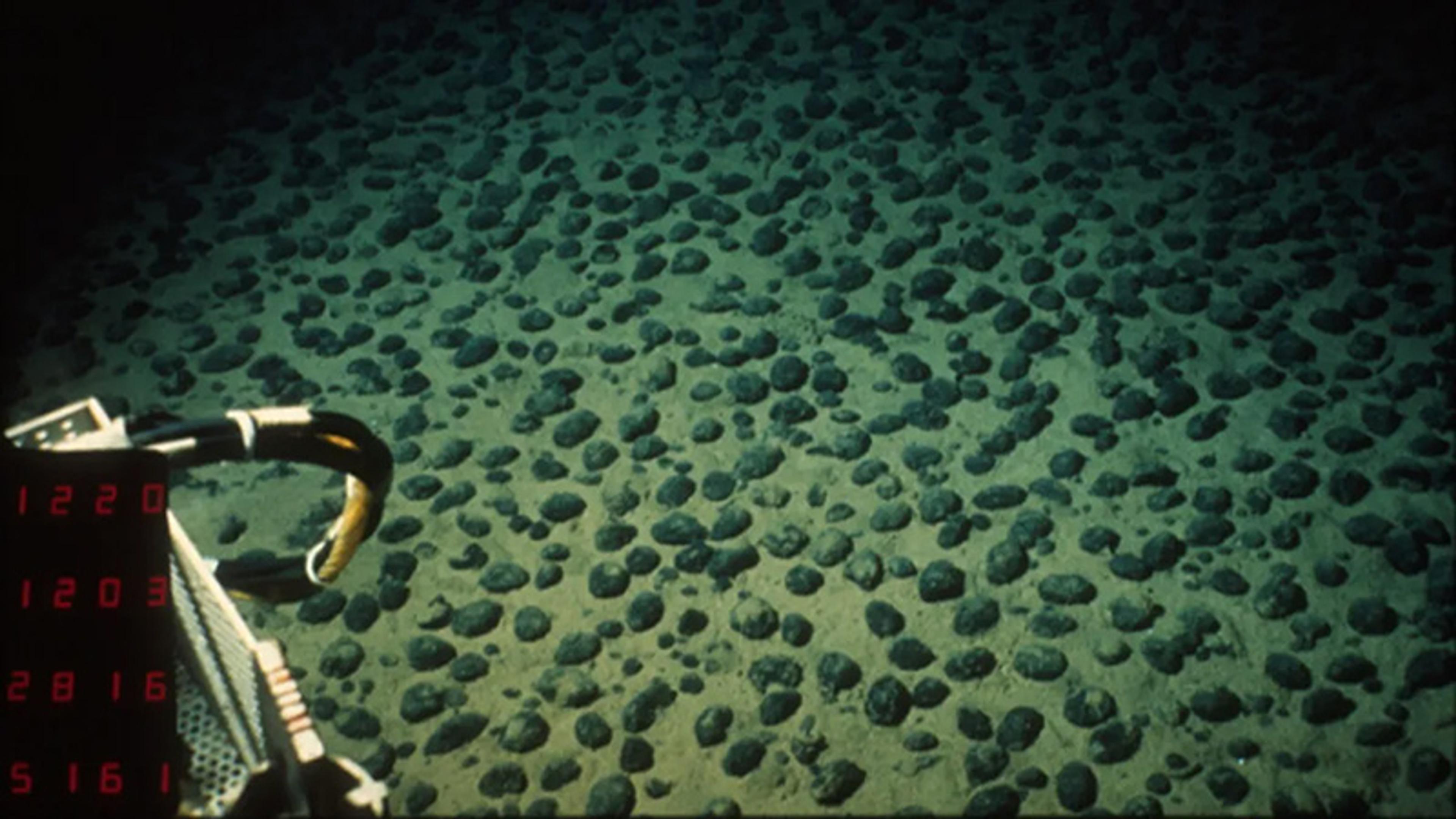
A deep-sea submersible surveying the nodule-strewn seabed. Courtesy Philweb/Wikimedia
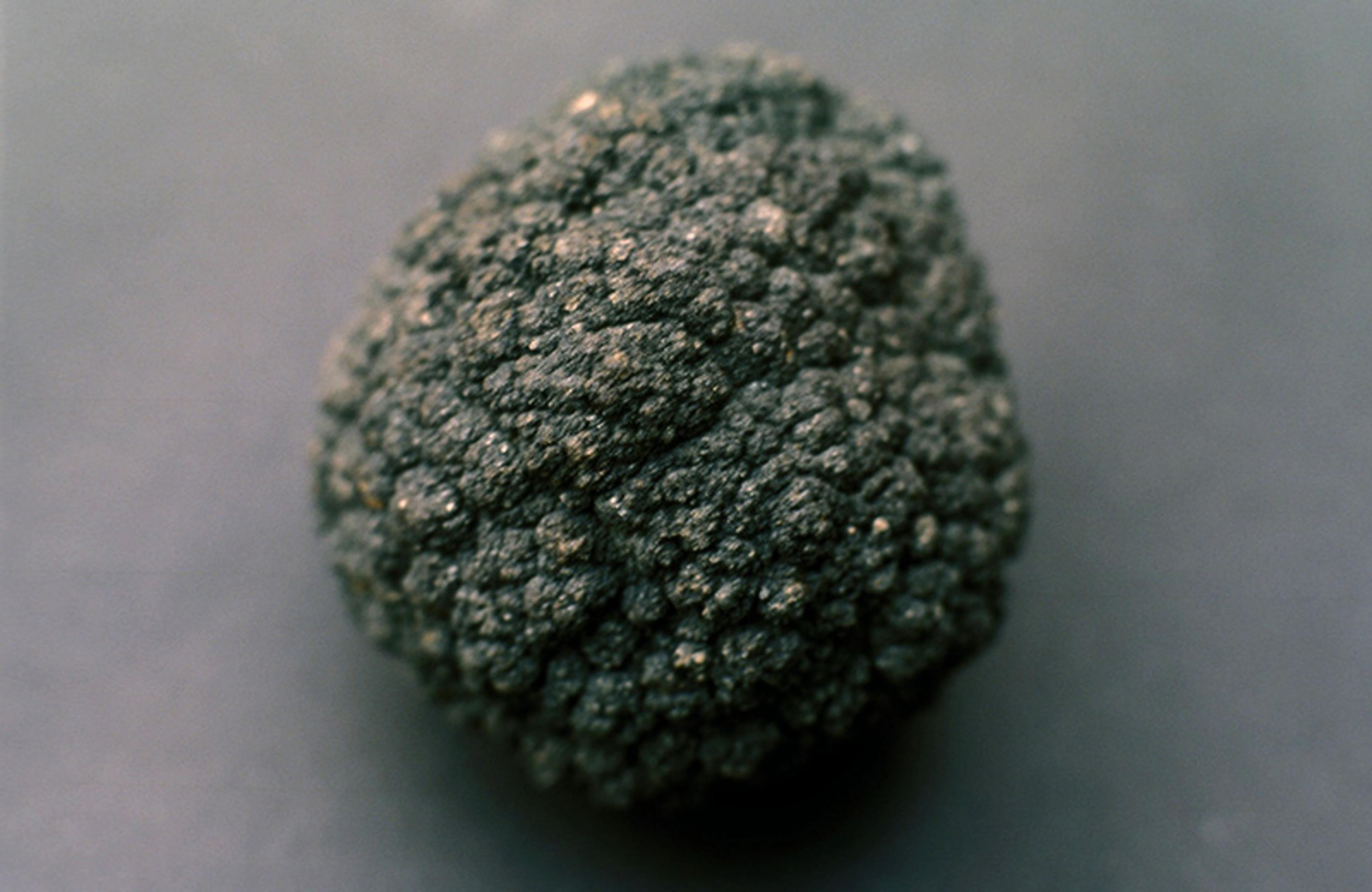
A manganese nodule collected in 1982 from the Pacific seabed. Courtesy Wikimedia
Most deep-sea mining proposals to date depend upon huge machines that fire jets of water at the sea floor to dislodge the nodules, before vacuuming them up and sending them up a pipe to a ship on the surface. Exactly what this will mean for the communities of organisms that live on and around the nodules is unclear, not least because our understanding of the ecology of the deep ocean remains extremely limited: in a survey of one of the areas with the most potential for mining, 70 to 90 per cent of the species found were new to science. What we do know is that the noise and sediment thrown up by deep-sea mining can spread across large areas, and that regions disturbed in 1989 hadn’t recovered when researchers returned nearly three decades later. But it’s possible to see the way these different temporalities – the deep time slowness of the nodules’ formation, the slow pulse of life on the seafloor, the spreading destruction of colonialism and capitalism and short-term profiteering that created the climate crisis and the urgency of the energy transition – collide, with depressingly familiar results. The long term is largely ignored, overtaken by the demands of the immediate, setting in train changes that will take thousands, or even millions of years to play out.
If there is an irony to this, it is that the ocean is itself a vessel of deep time and planetary change. The organisms that live within it have shaped the planet, whether by laying down fossil fuels or through the work of corals and other reef-building organisms, whose edifices helped create not just coral atolls, but hills and mountains, and the limestone that humans have long quarried for our constructions. Over the great span of planetary time, the tidal drag of the Moon upon the ocean’s waters has helped slow Earth’s rotation, lengthening the day and allowing the Moon to orbit further and further away. Over billions of years, this may have doubled the length of a day – a change recorded in the bodies of marine animals. Each chamber in the shell of a modern nautilus has about 29 laminations, or roughly one for each day of the lunar month. As one moves back through the fossil record, this number decreases, until, in the Palaeozoic, nautiloid fossils have only eight or nine laminations per chamber. The dust and gravel deposited by melting icebergs and the genes of octopuses mark out the long dance of the glacials. Even our understanding of Earth’s climate over time depends in part on analysis of the minute shells of foraminifera in ocean sediments.
What might a consideration of these perspectives achieve? As the examples of sea level rise and deep-sea mining make clear, an oceanic lens reveals the degree to which many of the crises that surround us can be understood as crises of temporality, an increasingly unnerving mismatch between the ancientness and depth of time contained in the materiality of fossil fuels, the narrow horizons of colonialism and capitalism, and the uncanny speed of the changes our actions have unleashed. But an appreciation of the immensity embedded in the ocean’s cycles also offers a way to fundamentally reimagine our relationship with time. Sometimes, this kind of long view is seen as morally flattening, a version of John Maynard Keynes’s quip that ‘in the long run we are all dead.’ But as Robert Macfarlane writes in Underland (2019), nature’s timescales don’t necessarily render ‘all life … equally insignificant in the face of eventual ruin’; instead we would do better to treat ‘deep time as a radical perspective, provoking us to action not apathy.’ In Macfarlane’s view, thinking with longer spans of time opens up the possibility of transcending the immediate, reimagining ourselves as part of a larger tapestry of experience and reciprocal responsibility that extends from the deep past to the deep future.
Giving ourselves over to the lengths and cycles of time that inhere in the ocean also makes it possible to imagine the world in new, and far richer, ways. In Being Salmon, Being Human (2017), the ecophilosopher Martin Lee Mueller observes that, until contact with Europeans, the Klallam people of the Pacific Northwest had no need to count the passage of years or imagine themselves within what we’d think of as history. Instead, they inhabited what Mueller calls ‘a thick present, enriched with countless strata of memory,’ given shape by their intimate and incredibly complex understanding of the rhythms of their lands and waters. To apprehend the world in this way is to be open to its living presence and pulse and change; but, more than that, it fosters an ethic of attentiveness and care that sustains a deeper and more creative experience of the present.
I suspect it’s this that many of us are most aware of when we’re in the ocean’s presence; it’s unlikely a coincidence that multiple studies show time by the water improves our mental health, recentring us in our bodies and in the present moment. But an awareness of the multiple temporalities that inhere in the ocean can also shift our perception in other, no less critical ways. For, once we let go of the limiting structures that confine us, we can recognise the contingency of the present moment, reminding us that these structures are not permanent, but are the products of very specific historical circumstances – and, as such, amenable to change.


